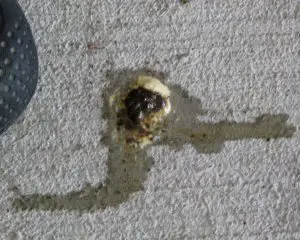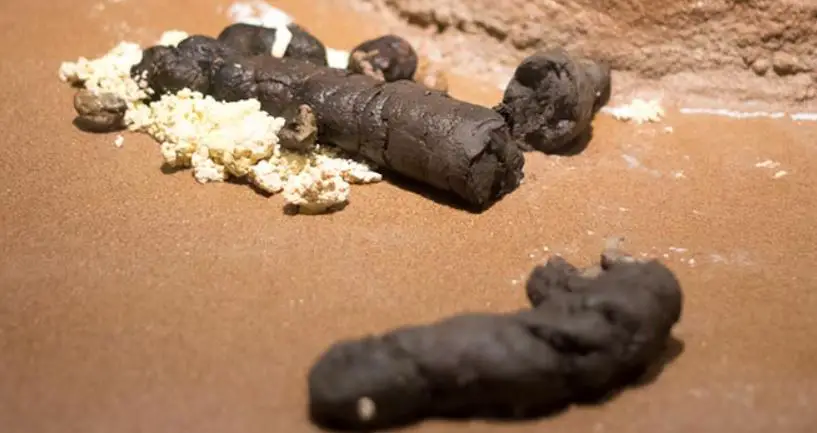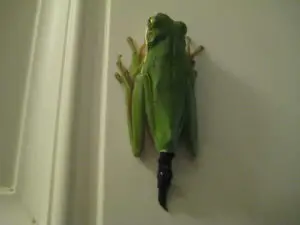Curiosity often leads us to explore various aspects of wildlife, and one such question that arises is, “What does snake poop look like?” Although not a topic discussed in everyday conversations, understanding snake poop can provide valuable insights into these fascinating creatures. In this article, we will delve into the characteristics of snake feces, factors affecting its appearance, how to identify it, and the importance of handling it safely. So, let’s embark on a journey of discovery and unravel the clues hidden within snake poop.
You may also want to read about what frog poop looks like.
Why Is Snake Poop Important?
Before we delve into the details, you might wonder why snake poop matters at all. Well, snake feces can offer valuable information about a snake’s health, diet, and overall well-being. By examining their droppings, researchers and reptile enthusiasts can gain insights into a snake’s feeding habits, the presence of parasites or diseases, and even its ecological role within its habitat. Therefore, understanding snake poop can contribute to our understanding of these elusive creatures and aid in conservation efforts.
What Does Snake Poop Look Like?
Size and Shape
What Does Snake Poop Look Like? Snake droppings come in various sizes and shapes, depending on the species, age, and diet of the snake. Generally, snake poop is tubular or elongated, similar to that of other reptiles. The diameter and length of the feces can vary depending on the size and age of the snake, ranging from a few millimeters in smaller species to several centimeters in larger ones.
Color
What Does Snake Poop Look Like? The color of snake poop can provide valuable clues about their diet. Most commonly, snake droppings are brown or dark brown, resembling the color of soil. However, the color can vary depending on the snake’s food source. For instance, snakes that consume primarily rodents may have feces with a reddish-brown hue due to the presence of blood from their prey. In contrast, snakes that feed on amphibians or insects may produce greenish or yellowish droppings.

Texture and Consistency
Characteristics of Snake Poop
What Does Snake Poop Look Like? The texture and consistency of snake poop can provide further insights into the health and digestion of the snake. Snake droppings are typically solid and firm, reflecting efficient digestion. However, certain factors, such as hydration levels and the type of food consumed, can influence the consistency of the feces. For example, if a snake has recently consumed a meal with a high water content, the droppings may appear softer or more moist.
It’s important to note that snakes also have a unique digestive process that involves the excretion of both feces and urates, which are the solid waste products of their kidneys. The urates are usually white and chalky in appearance and can be seen alongside the feces or expelled separately.
Factors Affecting Snake Poop
Several factors can influence the appearance and characteristics of snake poop. It’s important to consider these factors when trying to identify and interpret snake droppings.
Diet
The diet of a snake plays a significant role in determining the color, texture, and odor of its feces. Snakes are carnivorous, and their diet can include rodents, birds, amphibians, insects, or even other snakes. Each food source has its own nutritional content, which can affect the appearance of the droppings.

Species
Different snake species may have variations in their digestive processes and metabolism, leading to differences in their feces’ appearance. By familiarizing yourself with the typical characteristics of droppings from different snake species, you can narrow down the possibilities when attempting to identify snake poop.
Age and Size
The age and size of a snake can also influence the size and appearance of its droppings. Younger snakes generally produce smaller droppings, while larger and more mature snakes produce larger ones. Consider these factors when trying to determine the species of snake responsible for the droppings you’ve come across.
Environmental Factors
Environmental factors, such as temperature and humidity, can affect the consistency and decomposition rate of snake feces. In drier conditions, the droppings may dry out and become more brittle, while in humid environments, they may retain moisture and break down more slowly.
Identifying Snake Poop
Identifying snake poop requires careful observation and consideration of various factors. Here are some tips to help you in the identification process:
Visual Examination
Begin by visually examining the droppings. Take note of the size, shape, color, and texture. Compare them to reference materials or seek guidance from experts or field guides specific to your region to narrow down the possibilities.
Location and Surroundings
Consider the location where you found the droppings. Snakes often defecate in specific areas, such as along trails, near their resting spots, or close to their preferred habitats. Observing the surroundings and noting any other snake-related clues, such as shed skins or tracks, can provide further context.

Other Clues
Pay attention to any additional clues that may help with identification. For example, the presence of fur, feathers, or bones in the droppings can indicate the snake’s recent diet. Such observations can assist in narrowing down the potential snake species responsible for the droppings.
Safety Precautions When Handling Snake Poop (Continued)
Remember, it is always advisable to observe snakes and their droppings from a safe distance in their natural habitats. If you come across snake poop during your outdoor adventures, it’s best to leave it undisturbed unless you have the necessary expertise and permits for research purposes.
If you encounter snake droppings in or around your property, it may indicate the presence of snakes nearby. In such cases, it’s important to take precautions to ensure your safety and that of the snakes:
- Avoid approaching or provoking the snake if you see one.
- Seal off any openings or gaps in your property that could serve as potential snake entry points.
- If you suspect a snake infestation or have concerns, contact a professional wildlife or pest control service experienced in dealing with snakes.
By prioritizing safety and respecting the natural behaviors of snakes, we can coexist harmoniously with these fascinating reptiles.
Conclusion
Understanding what snake poop looks like can provide valuable insights into the health, diet, and behavior of these elusive creatures. By examining the size, shape, color, and texture of snake droppings, we can decipher important clues about their overall well-being. However, it’s essential to remember that handling snake droppings should be done with caution and with respect for these creatures and their habitats. So, the next time you come across snake poop, take a moment to appreciate the secrets it holds and the role it plays in the fascinating world of snakes.
FAQs
1. Can snake poop be harmful? Snake droppings can potentially contain bacteria or parasites, so it’s advisable to handle them with gloves and wash your hands thoroughly afterward. However, with proper precautions, the risk of harm is minimal.
2. How often do snakes poop? The frequency of snake defecation varies depending on factors such as the snake’s species, size, and metabolism. Generally, snakes may poop every few days to a couple of weeks.
3. Can you determine a snake’s health from its poop? While snake poop can provide some insights into a snake’s health, it is not the sole indicator. Other factors, such as behavior, appetite, and overall appearance, should also be considered when assessing a snake’s well-being.
4. Does snake poop have a smell? Fresh snake droppings typically have a mild, earthy odor. However, the smell can intensify if the droppings have been sitting for a while or if the snake has consumed a particularly pungent food source.
5. Can snake poop be used for research? Yes, snake droppings can provide valuable information for scientific research. By analyzing the contents of the droppings, researchers can gain insights into the diet, ecology, and health of snake populations.